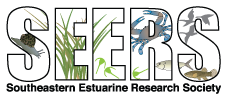Indian River Lagoon Clam Workshop
SEERS is proud to announce that we received a CERF Regional Workshop Grant to discuss clams as a restoration tool for the Indian River Lagoon (IRL). The Indian River Lagoon (IRL) is an Estuary of National Significance located on the east coast of Florida and is bordered by seven coastal counties. This 156-mile-long shallow lagoon complex ranges from 0.4 to 5 miles in width and is home to over 4,300 species, making it the most biodiverse estuary in the northern hemisphere. Historically, hard clams and oysters have been significant regulators of healthy water quality and economic stability in the IRL. Unfortunately, a variety of threats, such as eutrophication, freshwater releases, and algal blooms, have drastically decreased bivalve abundance and thus filtering capacity. Oyster restoration has also been utilized extensively throughout the IRL with variable success, and until very recently, other filter feeders, such as clams, have been widely overlooked as a restoration tool. Because bivalves are highly dependent on local environmental conditions, there is a need to highlight restoration needs, obstacles and knowledge surrounding bivalve restoration in the IRL. Ultimately, the knowledge gained from this workshop will fundamentally support management plans and decisions involving ecosystem restoration projects in the future. The workshop will provide a forum for discussing clam restoration and research in IRL. The objectives of the workshop are to:
- Provide a forum to disseminate current knowledge of clam research and restoration in the IRL
- Develop a list of research and management needs to enable more widespread use of clams in IRL restoration activities
- Provide results and discussions that can be used to inform policy related to management
- Foster collaborations and discussions among participants
Registration has closed. Registrants can find out more about the workshop here.
Along with SEERS, partners for this workshop include the South Florida Water Management District, the University of Florida Whitney Laboratory for Marine Bioscience, the Florida Oceanographic Society, and Ducks Unlimited.


